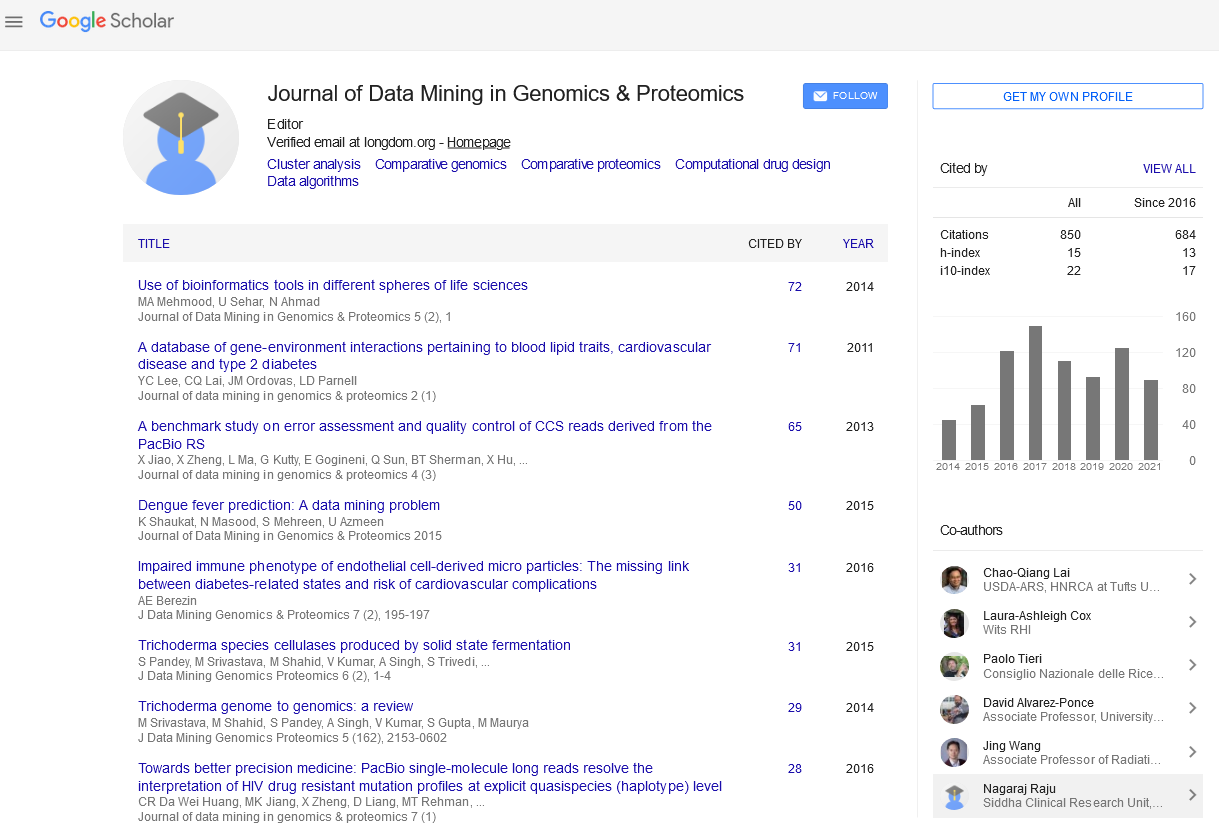PMC/PubMed Indexed Articles
Indexed In
- Academic Journals Database
- Open J Gate
- Genamics JournalSeek
- JournalTOCs
- ResearchBible
- Ulrich's Periodicals Directory
- Electronic Journals Library
- RefSeek
- Hamdard University
- EBSCO A-Z
- OCLC- WorldCat
- Scholarsteer
- SWB online catalog
- Virtual Library of Biology (vifabio)
- Publons
- MIAR
- Geneva Foundation for Medical Education and Research
- Euro Pub
- Google Scholar
Useful Links
Share This Page
Journal Flyer

Open Access Journals
- Agri and Aquaculture
- Biochemistry
- Bioinformatics & Systems Biology
- Business & Management
- Chemistry
- Clinical Sciences
- Engineering
- Food & Nutrition
- General Science
- Genetics & Molecular Biology
- Immunology & Microbiology
- Medical Sciences
- Neuroscience & Psychology
- Nursing & Health Care
- Pharmaceutical Sciences
Abstract
Infectomic Insights into the Roles of Exosymbiosis-Endosymbiosis Imbalance (EESI) in HIV-1 and SIV Infections
Sheng-He Huang and Yan-Hong Zhou
The vast majority of microbes form a healthy symbiotic ‘superorganism’ with the hosts. There are two types of symbiosis (Sym), exosymbiosis (e.g. microbiota) and endosymbiosis (e.g. mitochondria). It has been suggested that the exo-endo Sym balance (EESB) highly contribute to maintain the host homeostasis. However, alterations to the EESB caused by microbial (e.g. bacterial and viral pathogens) and non-microbial factors (e.g. substance abuse, diet and/or lifestyle) can disturb this symbiotic relationship and promote disease, such as inflammatory bowel diseases and acquired immune deficiency syndrome (AIDS). Progressive AIDS caused by human immunodeficiency virus (HIV) and simian immunodeficiency virus (SIV) is characterized by systemic inflammation, opportunistic infection and malignant disorders resulting from generalized immune activation-mediated destruction of the healthy symbiotic super organism. Two extreme phenotypes are present in both HIV and SIV infections, including slow or rapid progression to AIDS (Pat: pathogenesis) in a majority of the infected human subjects and the non-natural primate host (i.e. rhesus macaques, RMs), and nonprogression to AIDS (Sym) in a minority of the infected people and the natural primate hosts (i.e. sooty mangabeys, SMs). Recently, it has been demonstrated that both exosymbiotic and endosymbiotic disorders contribute to the development of AIDS through infectomic studies of the extreme phenotypes of HIV/SIV infections. The involvement of the EESB in the pathogenesis and therapeutics of HIV infections is becoming increasingly clear. Indeed, many changes in the microbial diversity, abundance and composition of the gut microbiota and mitochondrial functions have been reported in HIV/AIDS, suggesting that there exist EESB problems in this disease. HIV virotoxins have been implicated in exploiting mitochondria to promote the targeted progressive and inexorable depletion of key immune cells (e.g. CD4 T cells), a hallmark of HIV/SIV infections. These findings support the notion that the exo-endo Sym imbalance (EESI) may play a central role in epidemiology, pathogenesis and management of infectious diseases, including AIDS caused by HIV-1 and SIV. Correction of the EESI problems in HIV/SIV infections may lead to a rational control of AIDS.


